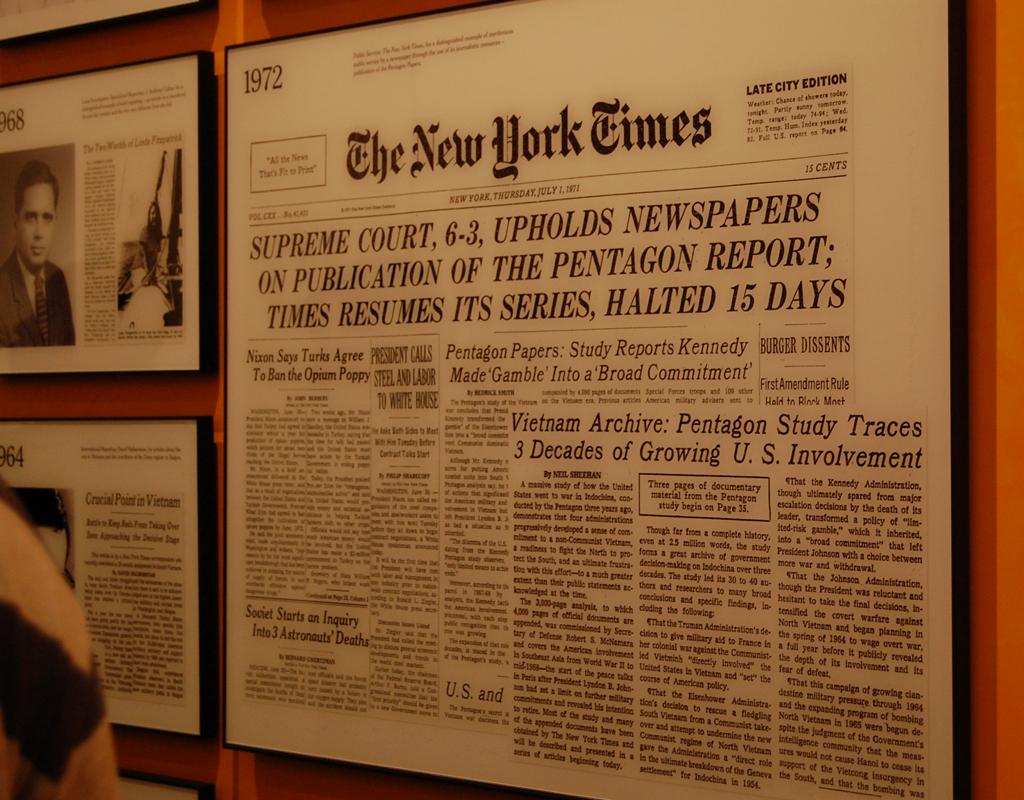By Svenja van den Woldenberg, Staff Writer
Eight University students were given the experience of a lifetime on Monday night, Nov. 28: a tour of The New York Times building. The trip was sponsored by the Hofstra chapter of the Society of Professional Journalists.
The building’s architecture follows the vision of The New York Times chairman and publisher Arthur Sulzberger, Jr. “The open plan and ease of communication, both vertically and horizontally, represent our culture of collaboration and transparency. The dazzling design represents our commitment to constant innovation.”
The lobby features a view of an open-air garden encased in glass with 50-foot tall paper trees. Inside the lobby is Moveable Type, a work of art by New York artist Ben Ruben and U.C.L.A. Associate Professor Mark Hansen, consisting of 560 index card-sized screens with excerpts of text from The New York Times archive. After several confusing minutes of waiting in an empty lobby, our group of students and Professors Carol Fletcher, Daniel Van Benthuysen and Peter Goodman assembled and were greeted by Renee Murawski, Night National Editor, and Brian Fidelman, Page Designer. Security labeled us all with visitor badges and we filed into the elevator. “Everybody inhale,” said Van Benthuysen.
Our first stop was the Pulitzer Prize Hall of Fame, which chronicles all 106 Pulitzer Prizes The New York Times has won. The wall starts with the most recent winners and ends with the first award from 1918 for most complete and accurate coverage of World War I. It’s a wall well worth studying for hours and hours, but we were swept back into the elevator for a look at the newsroom, which was approaching deadline, and for a chat with Rick Berke, Assistant Managing Editor and former White House correspondent.
We were seated in the “elite circle” at the center of the editorial conference room. The room is used twice a day to argue and decide what makes it onto the front page. Seth Carlson, digital designer, stopped by to talk about apps and how The New York Times gets onto our various mobile devices.
But the main attraction was Berke, who told us a funny story about a conversation he had with then-President Bill Clinton in May 1999, right on deadline, concerning what he thought of his Vice President’s campaign (Clinton was not thrilled).
The night was concluded around 9 p.m. with a walk through a rather empty newsroom that was now on deadline. We passed Night Photography Editor Steve Berman, who gave us a preview of an image on the next day’s cover, and Nick Barajas, Pagination Editor, was putting the final touches on the front page. We could practically reach out, take the mouse and move things around and say that we worked on the front page of The New York Times. With our journalistic minds sufficiently blown, we said our goodbyes and headed back to Penn Station.
Edited with corrections 12/8/11.

The New York Times wall of Pulitzers highlights 106 awards, including this one in 1972 for the Pentagon Papers. (Svenja van den Woldenberg/The Chronicle)







